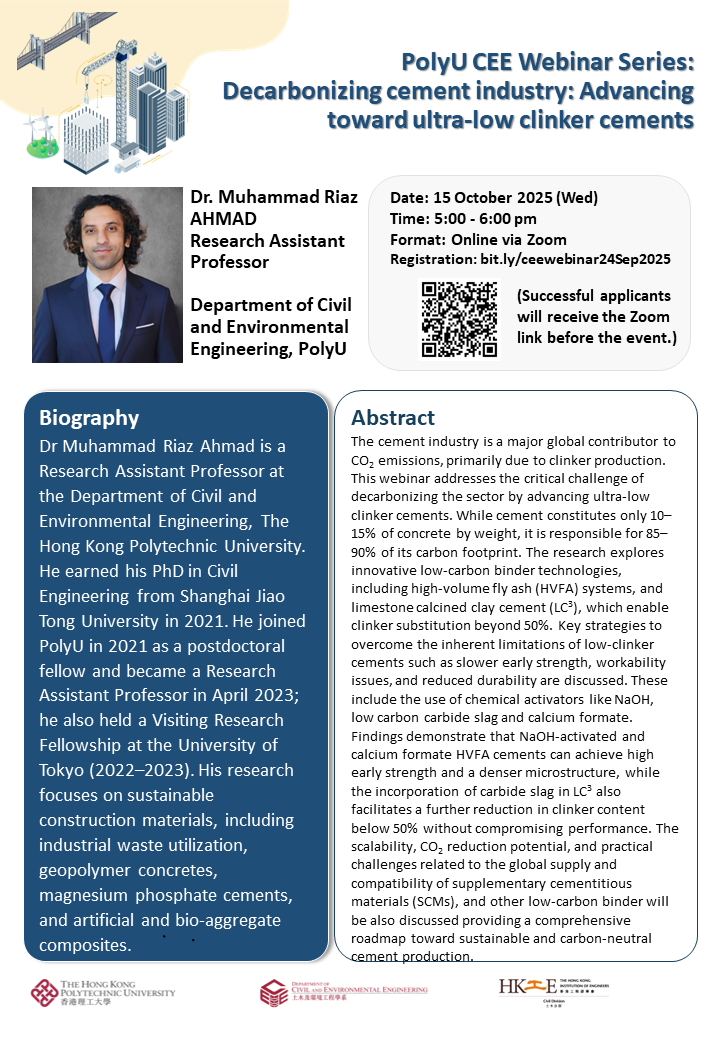Decarbonizing cement industry: Advancing toward ultra-low clinker cements
Conference / Workshop
-
Date
15 Oct 2025
-
Organiser
CEE / HKIE Civil Division
-
Time
17:00 - 18:00
-
Venue
Webinar
Speaker
Dr Muhammad Riaz Ahmad
Enquiry
CHAN, Winnie PK [CEE] winnie.pk.chan@polyu.edu.hk
Summary
The cement industry is a major global contributor to CO2 emissions, primarily due to clinker production. This webinar addresses the critical challenge of decarbonizing the sector by advancing ultra-low clinker cements. While cement constitutes only 10–15% of concrete by weight, it is responsible for 85–90% of its carbon footprint. The research explores innovative low-carbon binder technologies, including high-volume fly ash (HVFA) systems, and limestone calcined clay cement (LC3), which enable clinker substitution beyond 50%. Key strategies to overcome the inherent limitations of low-clinker cements such as slower early strength, workability issues, and reduced durability are discussed. These include the use of chemical activators like NaOH, low carbon carbide slag and calcium formate. Findings demonstrate that NaOH-activated and calcium formate HVFA cements can achieve high early strength and a denser microstructure, while the incorporation of carbide slag in LC3 also facilitates a further reduction in clinker content below 50% without compromising performance. The scalability, CO2 reduction potential, and practical challenges related to the global supply and compatibility of supplementary cementitious materials (SCMs), and other low-carbon binder will be also discussed providing a comprehensive roadmap toward sustainable and carbon-neutral cement production.





